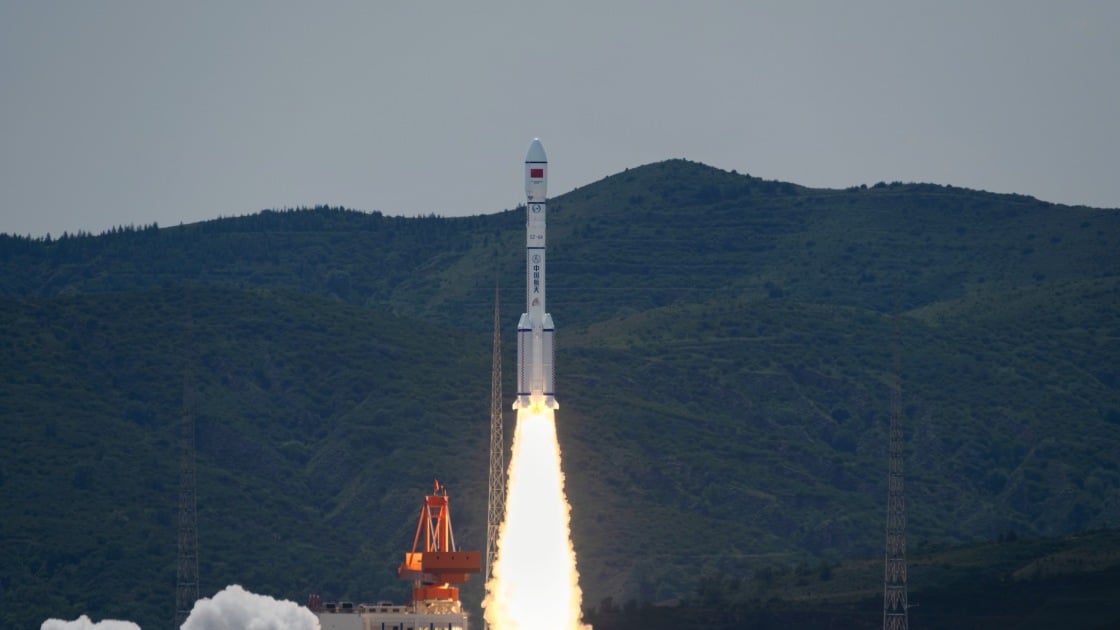
A rocket carrying satellites for China’s own version of Starlink has accidentally broken apart in space, creating a debris field in Earth’s orbit. The rocket, Long March 6A, took off on Tuesday, carrying the first 18 satellites for China’s Qianfan “Thousand Sails” satellite constellation, which was previously known as G60. Although the satellites were successfully deployed, the upper stage to the rocket appears to have split into numerous fragments, according to satellite tracking firms. On Thursday, US Space Command confirmed the “break-up” of the rocket, saying the incident has resulted in over “300 pieces of trackable debris in low-Earth orbit.”
This Tweet is currently unavailable. It might be loading or has been removed.
Others such as the satellite monitoring company LeoLabs estimate the mishap created at least 700 fragments, and potentially more than 900. The danger is that the debris is orbiting the Earth at around 800 kilometers, and could eventually descend to where both SpaceX’s Starlink satellites and the International Space Station reside at 550km and 400km, respectively. The same debris field might also endanger China’s own Qianfan satellites. Slingshot Aerospace, which tracks space debris, added that it’s tracking over 50 pieces of space debris from the rocket, which “pose a significant hazard to LEO(low-Earth orbit) constellations below 800 km altitude.”
(Slingshot Aerospace)
But for now, both Space Command and SpaceX say the debris field doesn’t pose an immediate threat. That said, SpaceX estimates the fragments could remain in Earth’s orbit for decades to come, becoming a persistent orbital hazard. To ward off such dangers, the company has designed its Starlink satellites with thrusters capable of maneuvering them away from space junk. The satellites have done so before to avoid colliding with debris from a 2021 Russian anti-satellite missile test.
Recommended by Our Editors
The Chinese launch provider, China Great Wall Industry Corporation, so far hasn’t commented on the debris field or what might have caused the Long March 6A rocket to break apart. In the meantime, the incident is creating worries that China’s quest to build a Starlink competitor could result in more accidents that lead to debris fields. “If even a fraction of the launches needed to field this Chinese mega-constellation generate as much debris as this first launch, the result would be a notable addition to the space debris population in LEO,” said Slightshot Aerospace VP Audrey Schaffer.In response to the accident, SpaceX is also calling on all satellite and launch providers to implement “best practices” to prevent future flights from creating space debris. “Space safety and sustainability are technical challenges but they can be managed with transparent communication on asset locations (current and planned), proactive mitigations like deorbiting upper stages after payload dispense, and passive safety measures such as inserting at lower altitudes and raising to an operational orbit,” the company said in a tweet.
Get Our Best Stories!
Sign up for What’s New Now to get our top stories delivered to your inbox every morning.
This newsletter may contain advertising, deals, or affiliate links. Subscribing to a newsletter indicates your consent to our Terms of Use and Privacy Policy. You may unsubscribe from the newsletters at any time.






